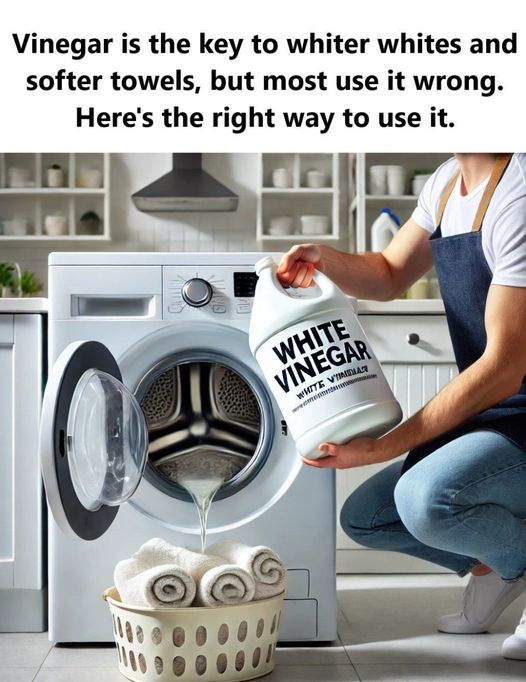
In the quest for pristine white garments and luxuriously soft towels, many turn to commercial detergents and fabric softeners. However, a simple household staple—white distilled vinegar—can achieve remarkable results when used correctly in your laundry routine. This natural, cost-effective solution not only enhances fabric quality but also offers environmental benefits.
Understanding Vinegar’s Role in Laundry
White distilled vinegar contains acetic acid, which effectively breaks down mineral deposits and dissolves residues left by detergents and soaps. This action helps in softening fabrics and restoring the brightness of white clothing. Additionally, vinegar neutralizes odors, making it a versatile agent in maintaining fresh-smelling laundry.
Common Misconceptions About Using Vinegar
While vinegar is beneficial, misconceptions about its use can lead to less-than-ideal outcomes:
- Overuse: Adding excessive vinegar can damage certain fabrics and reduce the efficiency of your washing machine.
- Mixing with Bleach: Combining vinegar with chlorine bleach creates harmful chlorine gas. Always use these substances separately.
- Direct Application: Pouring undiluted vinegar directly onto clothes may cause discoloration or weaken fibers.
The Correct Way to Use Vinegar for Whiter Whites
To achieve brighter whites, follow these steps:
- Pre-Soak Method:
- Fill a basin with warm water.
- Add one cup of white distilled vinegar.
- Soak white garments for an hour before washing as usual.
- During the Wash Cycle:
- Add half a cup of vinegar to the rinse cycle.
- This helps remove detergent residues that can dull white fabrics.
Achieving Softer Towels with Vinegar
Over time, towels can become stiff due to detergent buildup and hard water minerals. Vinegar can restore their softness:
- Washing Instructions:
- Wash towels in hot water with a cup of white vinegar (no detergent).
- Run a second cycle with half a cup of baking soda to neutralize odors and further soften the fabric.
- Drying Tips:
- Avoid using commercial fabric softeners, as they can reduce absorbency.
- Dry towels thoroughly to prevent mildew.
Additional Benefits of Using Vinegar in Laundry
- Odor Elimination: Vinegar neutralizes odors, making it effective for gym clothes and smoke-affected fabrics.
- Color Preservation: Adding half a cup of vinegar during the rinse cycle can help maintain vibrant colors by removing detergent residues.
- Static Reduction: Vinegar reduces static cling, eliminating the need for chemical-laden dryer sheets.
Environmental and Economic Advantages
Using vinegar is an eco-friendly alternative to synthetic chemicals. It’s biodegradable and doesn’t contribute to water pollution. Economically, vinegar is inexpensive and readily available, offering a budget-friendly solution for laundry care.
Precautions When Using Vinegar
- Fabric Compatibility: Avoid using vinegar on delicate fabrics like silk or acetate, as the acid may damage them.
- Machine Maintenance: Regularly clean your washing machine, as vinegar can loosen residues that may clog the system over time.
- Allergies and Sensitivities: While rare, some individuals may be sensitive to vinegar. It’s advisable to test on a small fabric area first.
Conclusion
Incorporating white distilled vinegar into your laundry routine can lead to brighter whites and softer towels when used correctly. This natural method not only enhances fabric quality but also offers environmental and economic benefits. By understanding the proper application of vinegar, you can achieve optimal laundry results without relying on harsh chemicals.




